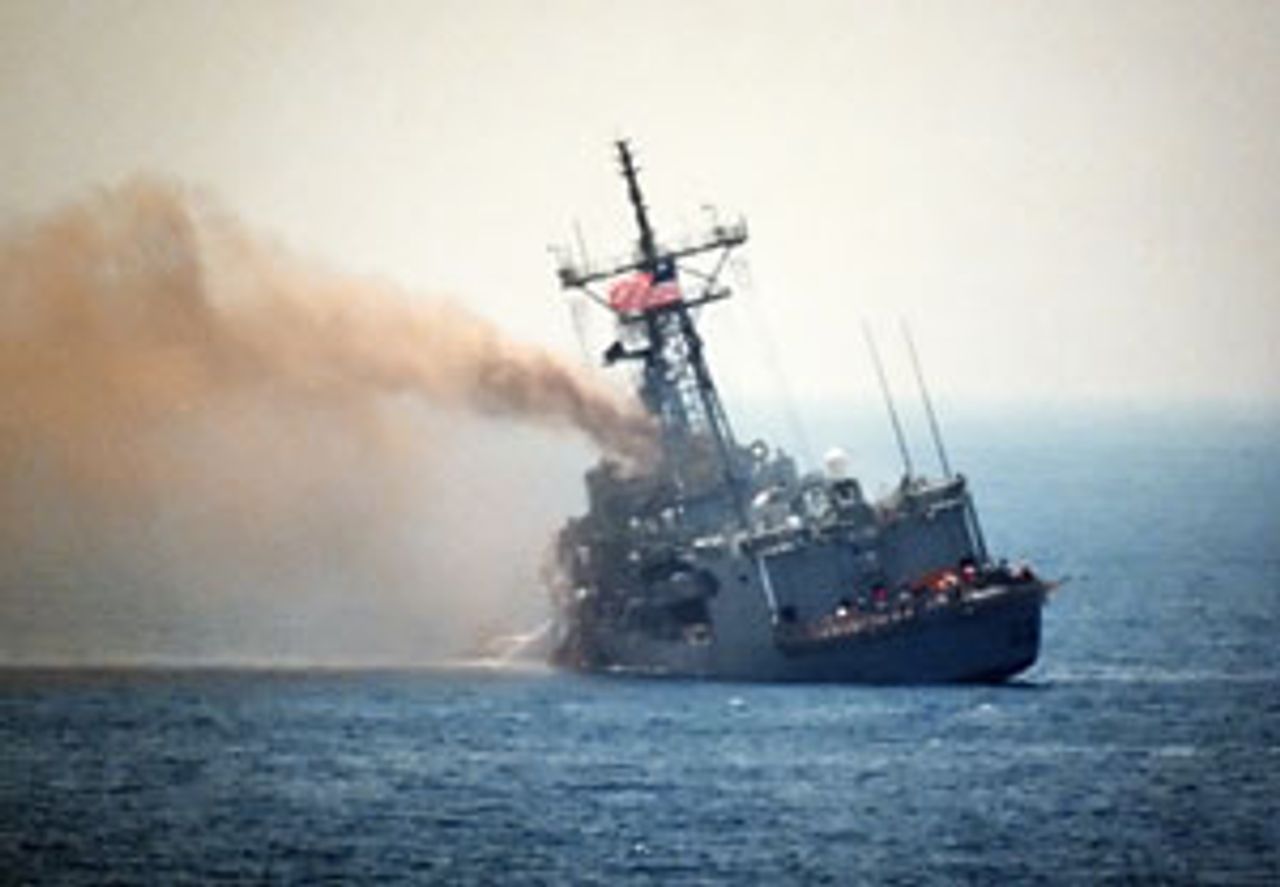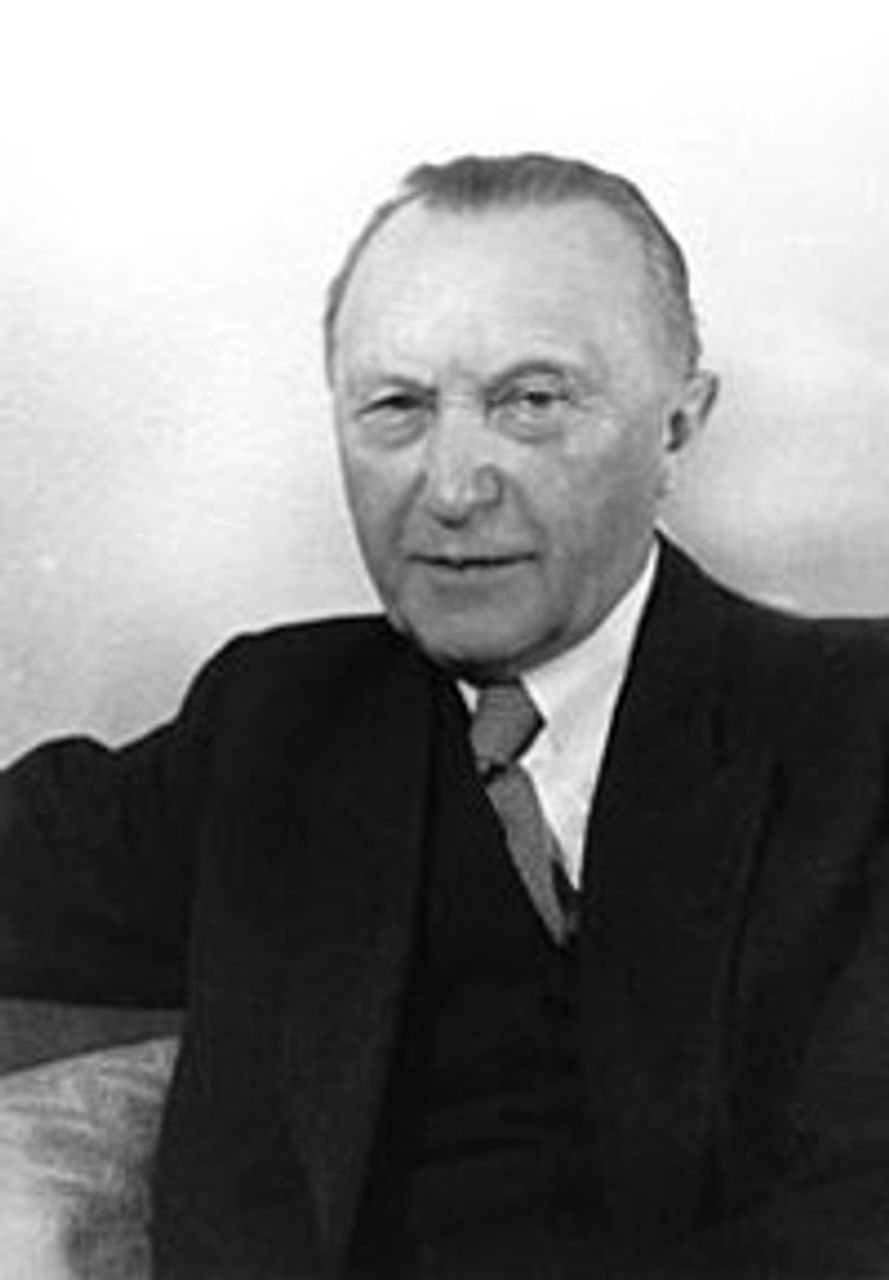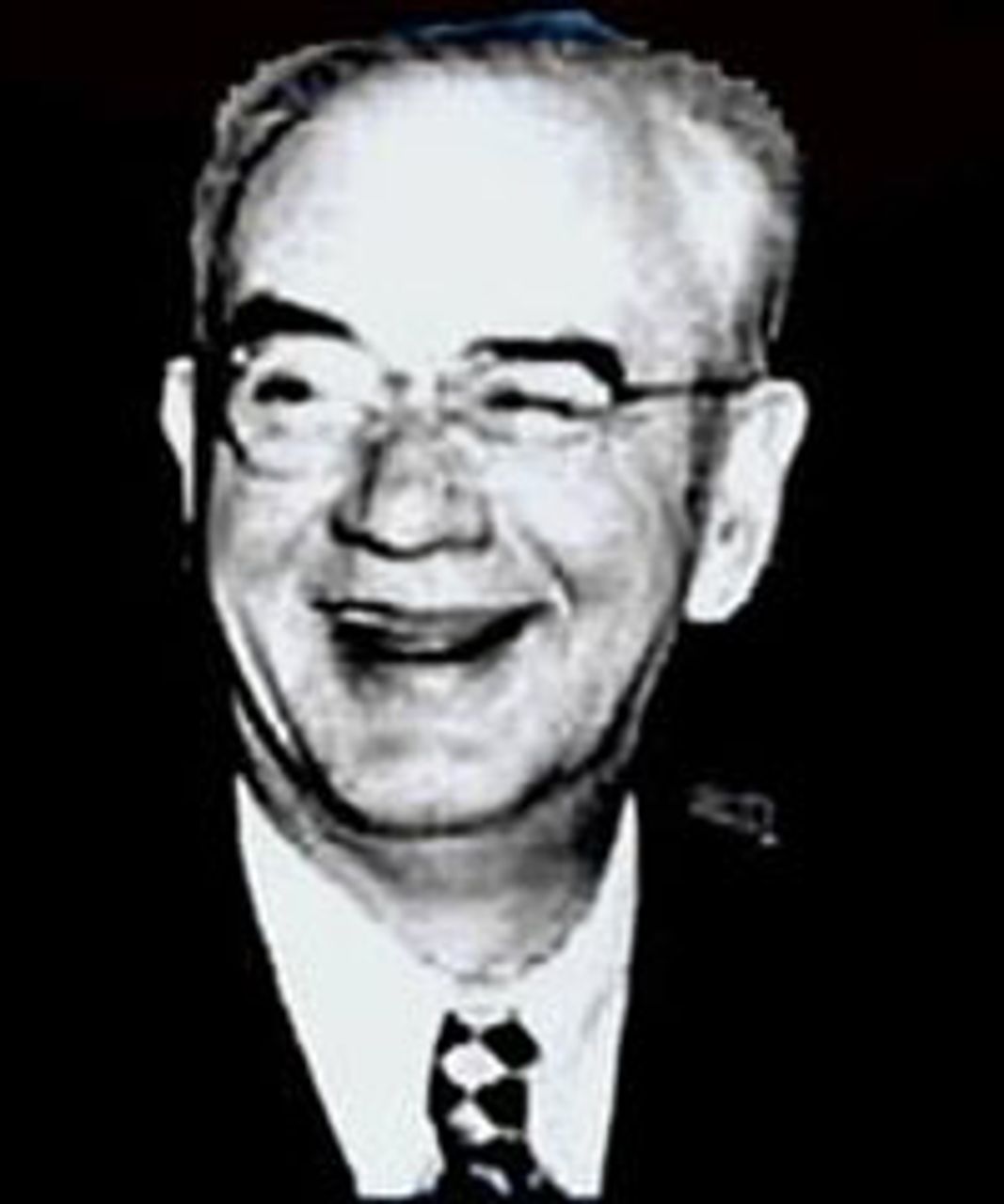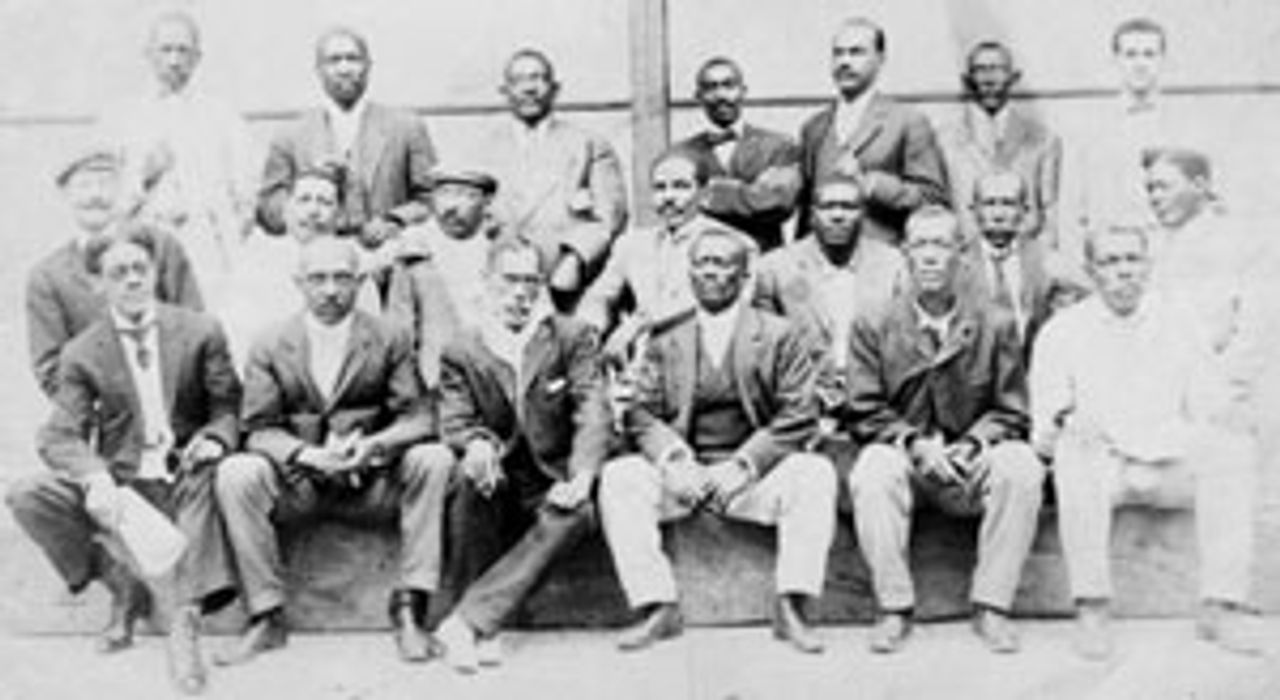This Week in History provides brief synopses of important historical events whose anniversaries fall this week.
25 Years Ago | 50 Years Ago | 75 Years Ago | 100 Years Ago
25 years ago: 37 American seamen killed in missile attack on USS Stark
 USS Stark after missile strike
USS Stark after missile strikeTwo missiles fired by an Iraqi jet on the American frigate USS Stark on May 17, 1987, killed 37 seamen and injured 21 others. The incident took place in the Persian Gulf during the eight-year Iran-Iraq war. US President Reagan immediately declared a high state of alert for all US naval forces in the Persian Gulf, but otherwise acted with restraint, subsequently speaking of reparations from the Iraqi regime, but not of retaliation.
The Stark, a Perry class guided missile frigate and part of a seven-ship task force deployed south of the Iran-Iraq war zone, had been described by the Pentagon as having the capability of defense against Exocet missiles. An AWACS spy plane informed the ship of the approach of the Iraqi Mirage F1 fighter an hour before the attack, and later that the aircraft’s fire-control radar was locked onto the ship, but the on-board defense system wasn’t used, either the missile decoys the Phalanx anti-missile gun, capable of firing 3,000 rounds a minute. The Stark issued two radio warnings, but received no response from the jet.
The two 1,500-pound sea-skimming missiles hit the Stark on the port side, one blowing a huge hole in the ship’s hull. Twenty-nine men were killed in the explosion and fire, eight died later of wounds and two were lost at sea. The fire was fought for nearly 24 hours before it was extinguished.
Iraqi President Saddam Hussein sent a message to US President Reagan saying, “I hope this unintentional accident will not affect relations between Iraq and the United States of America.” The US and Iraq disputed the position of the USS Stark for months afterward. Iraq claimed that the US ship was inside an exclusion zone near Iran, while the US military denies that.
The activities in the Persian Gulf of the US fleet were never openly stated and its policy toward the Iran-Iraq war was to fuel the bloody conflict. For years, the US was supplying weapons to Iran while giving military intelligence to Iraq. The US had long-standing geopolitical interest in the oil-rich region.
Despite all the unanswered questions about the incident, US Secretary of Defense Caspar Weinberger and Assistant Secretary of State Richard Murphy used the event as a pretext to make direct threats of war against Iran—even though the missile attack was by Iraq.
Weinberger called on Arab nations on the gulf to follow the lead of Kuwait and Bahrain in providing landing rights for US warplanes, a measure they had long refused.
50 years ago: Tensions between US, western allies
 Konrad Adenauer
Konrad AdenauerThis week in 1962 a series of conflicts emerged between the US and its key European allies.
On May 14 Walter C. Dowling, US ambassador, conferred for nearly two hours with West German Chancellor Konrad Adenauer on “rift that has opened between West Germany” and the US, the New York Times reported. A week earlier Secretary of State Dean Rusk had delivered a public “dressing down” to Adenauer over West German opposition to US-Soviet discussions on Berlin. Adenauer retaliated by asserting that West Germany preferred French leadership in west-east negotiations.
On May 15, French President Charles de Gaulle “issued a clear challenge to US predominance in the defense of Western Europe,” according to the Times. In a speech at Elysee Palace, de Gaulle spelled out a vision in which France would develop its own military leadership in Europe, including through an expanded arsenal of nuclear weapons. De Gaulle’s aim was for a French-West German-led “inner alliance” within the broader Atlantic alliance.
On May 15, the European Economic Community (EEC) voted unanimously to speed up the reduction of tariffs among member states and arrive at a shared tariff policy versus the outside world. The agreement would reduce all nonfarm tariffs among member states by 60 percent by July 1, 1963.The EEC also warned the US that it would put in place retaliatory tariffs if the US did not decrease its own tariffs on window glass and carpet.
At the same meeting of the EEC states— West Germany, France, Italy, Belgium, the Netherlands, and Luxembourg—France effectively blocked the application for membership of the chief US ally in Europe, Great Britain. France, backed by West Germany and Italy, opposed an aspect of the British negotiators’ attempt to maintain a privileged economic relationship with its former colonial empire, the Commonwealth.
On May 17 US President John Kennedy spoke on what the New York Times called the “troubled alliance” with Europe in an afternoon press conference and again at an evening speech before the Conference Trade Board. His speech was directed chiefly against de Gaulle’s move toward military independence, but he also called for tariff reductions in order to increase US trade with Europe.
75 years ago: CIO opens campaign to unionize US steel workers
 Philip Murray
Philip MurrayFresh from their successful campaign to unionize American automobile workers the Committee for Industrial Organization (CIO) began its campaign to unionize steel workers in May 1937.
On May 14, 1937, United States Steel Corporation, a long-standing bastion of anti-unionism, signed a one-year contract with Steel Workers Organizing Committee (SWOC), covering their 125,000 strong workforce. The contract provided for a minimum $5.00 per day wages and a 40-hour working week. By signing an agreement with industry leader US Steel, the CIO hoped to force the lesser steel firms (“Little Steel”) into line without strike action, which in the case of the auto industry had taken on a near-insurrectionary character.
The first major strike of the unionization drive ended on May 14. Picket lines had formed quickly around the Jones and Laughlin Steel Corporation plants in Aliquippa, Pennsylvania after workers were called out on strike by the SWOC the day before. Non-union members were prevented from entering their place of work and production was halted with all 27,000 employees idled. The local police force attempted to intimidate the strikers and their supporters by bombarding the picket lines with tear gas rounds, but to no avail.
Other major steel producers to be targeted in the organizing campaign included the Republic Steel Corporation of Cleveland, Youngstown Sheet and Tube Company, and Bethlehem Steel Corporation.
100 years ago: Cuban “race” riots
 Members of the Partido de Independiente de Color
Members of the Partido de Independiente de Color On 20 May1912 around 10,000 demonstrators in Cuba, largely in the southeastern province of Oriente, demanded that the Gomez administration repeal the Morúa law, which banned parties based on class or race.
The demonstration was led by the Partido Independiente de Color (PIC), a political party of Afro-Cubans. Having fought and lost 86,000 men in the war of independence (1895-98) Afro-Cubans were denied the gains promised in the war and continued to suffer political, economic, and social inequality. What began as a political protest ignited a social upheaval in Oriente, where Afro-Cubans comprised forty percent of the population. The government responded with an indiscriminate massacre of thousands of Afro-Cubans.
The riots were the outcome of the growing inequality in Cuba due to the political and economic domination of US interests in the island. Increasingly peasants lost control of their land, the source of their livelihoods.
In 1911, a North American traveler in Cuba remarked that “foreigners own ninety percent of all the land in Cuba that is worth working, and, since this is the case, the more foreign capital that comes in the better for the country. In other words, the only outlook for the Cuban is to serve as a hired hand.”
To address political and social repression and inequality, Afro-Cubans formed the PIC in 1907. The protest led by the PIC set in motion an insurrection among the peasants and workers in Oriente and Guantanamo in which several towns and villages were virtually destroyed. The media labeled the uprising a race war against whites.
US forces, which had occupied Cuba between 1898-1902, landed in Oriente in late May to restore order and protect US property. The process of pacification was ruthless, with around 6,000 Afro-Cubans killed throughout May and June. Members of the Liberal Party, which had historically directed a political appeal to Afro-Cuban votes, not only sanctioned but participated in the massacre.
Following the slaughter, a celebratory banquet was held in Central Park, Havana, by big business and the government.
